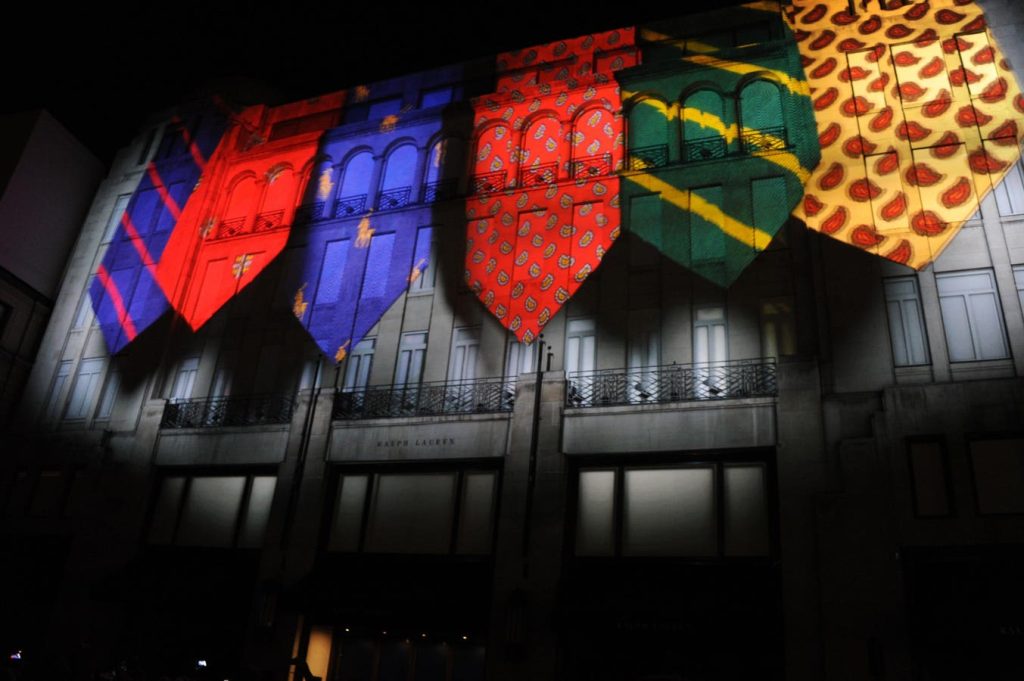LONDON – NOVEMBER 10: (EMBARGOED FOR PUBLICATION IN UK TABLOID NEWSPAPERS UNTIL 48 HOURS AFTER CREATE DATE AND TIME. MANDATORY CREDIT PHOTO BY DAVE M. BENETT/GETTY IMAGES REQUIRED) Ralph Lauren shows off its new 3D digital technology projected onto their Flagship store in Bond Street on November 10, 2010 in London, England. (Photo by Dave M. Benett/Getty Images)
Getty Images
For decades, smart international business strategy in fashion and retail meant adapting to geography. Luxury houses opened flagship stores in Paris, Tokyo, or New York; mass-market brands adjusted product lines to match local tastes in Brazil or China. The conventional wisdom was clear: winning meant tailoring your playbook to local and national differences. While that remains true, something new is happening in today’s retail landscape. Geography is no longer the only organizing principle: in an increasing number of cases, it is being eclipsed by generational dynamics and the speed of technology-driven trends.
To see why this shift matters, it helps to recall why geography once held such sway. For much of the twentieth century, distance acted as a natural divider. Information about style and culture traveled slowly, often filtered through local media or months-long supply chains. Regional managers had the best vantage point on their consumers because no one else could see them in real time. Trade barriers, rigid logistics, and localized tastes reinforced the logic of dividing authority along national and regional lines. The org chart of the multinational was built on the map.
Those conditions are eroding. Information speed has obliterated the old lag. A bucket hat trend in Seoul can go viral on TikTok and reshape consumer demand in Los Angeles within hours. Globalized supply chains, AI-assisted design, and on-demand production mean that central hubs can sense and react across borders almost instantly. And cultural diffusion has shifted: while differences remain, generational cohorts often share more with their global peers online than with older consumers in their own country. Geography still matters, but the factors that once made it paramount no longer hold the same weight.
Technology, of course, has always been transformative. The sewing machine, the mall, and e-commerce each redefined retail in their time. But what separates winners from losers in today’s market is the timing of adoption. Zara and Shein built dominance by compressing design-to-delivery timelines to catch microtrends at their peak. Meanwhile, slower-moving retailers often missed the moment. The traditional seasonal calendar is increasingly obsolete; the real calendar is the cultural clock of digital virality.
Caryn Pang, Professor of Marketing and Fashion Management at Hult International Business School (Disclosure: I am also a professor at Hult), explains the impact of these changes: “As technology continues to dominate, the amount and speed, of information being disseminated will only increase. As a result, leaders need to carefully adapt new concepts and strategies based on an individualized approach for their organization. Nothing is cookie cutter. Thoughtfulness and timing is imperative.”
This is a cautionary message for fashion leaders. A fast-moving brand that blindly chases digital trends without the right supply chain infrastructure risks both waste and backlash. Entire collections can collapse in clearance racks if production is out of sync with consumer sentiment. Conversely, a luxury house that waits too long to adapt digital storytelling — whether through livestream shopping, virtual fashion shows, or generative-AI personalization — risks losing cultural relevance.
The new competitive frontier is now a dual lens: geography and timing. Geography still matters — Chinese luxury buyers are not the same as Gen Z shoppers in Los Angeles. But timing and adaptability across generations and platforms can be just as decisive. And here lies the organizational implication: the org chart itself must flip. In the old model, regional headquarters held primacy because proximity was power. In the new model, the center must be designed around cultural sensing, generational analysis, and speed of response, with geography adapting at the edges rather than dictating the core.
The fashion industry has always been a mirror of society. Today, it reflects the paradox of abundance: more information, more trends, and more access than ever before. For executives, the challenge is not simply to see the signals but to act on them at the right pace. In a world where a TikTok clip can change what people wear in multiple countries overnight, the clock — not the map — increasingly sets the rules

